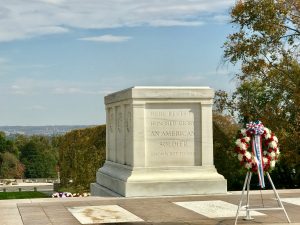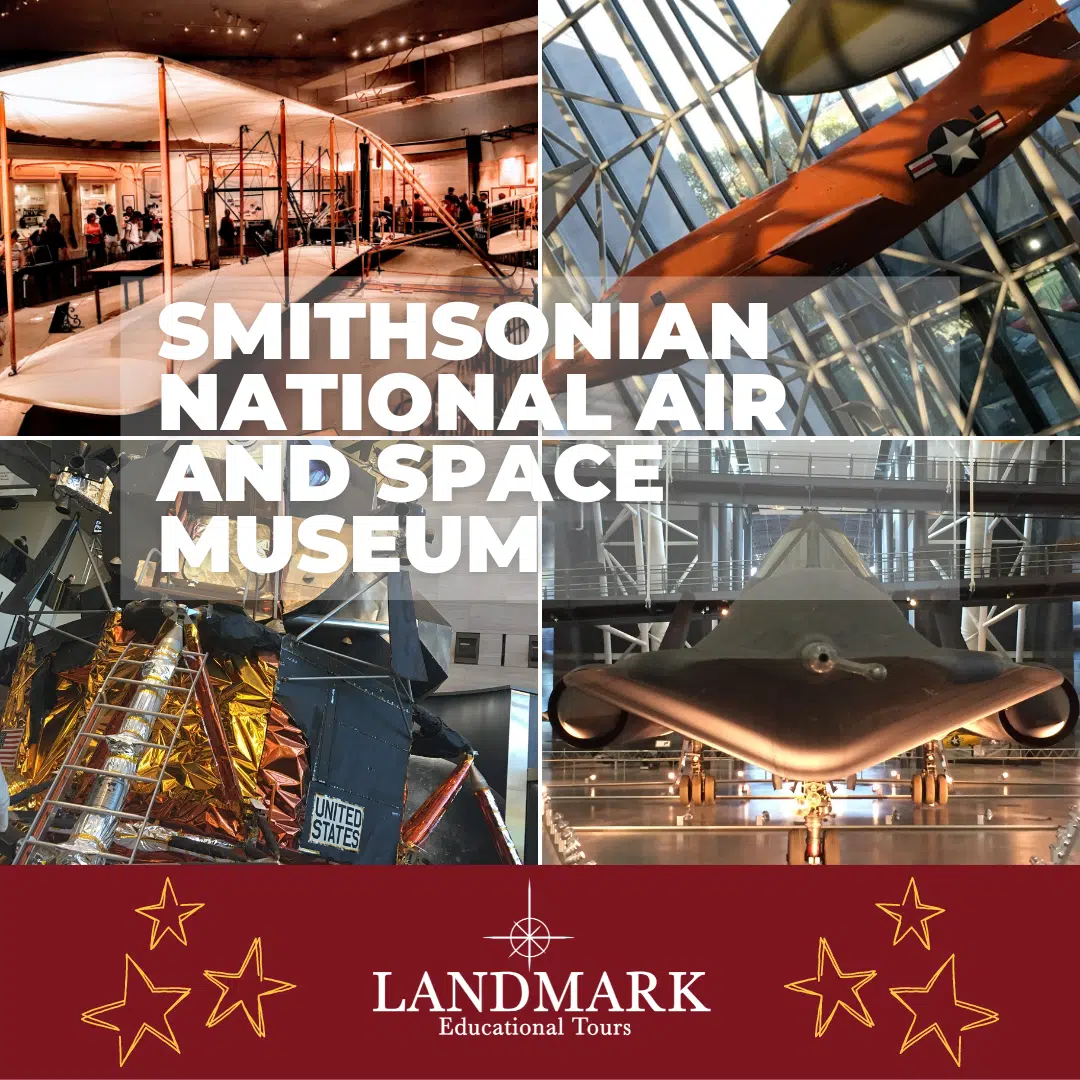Smithsonian National Air and Space Museum

Smithsonian National Air and Space Museum
In the heart of the nation’s capital, the Smithsonian National Air and Space Museum stands as an enduring tribute to the boundless human spirit of exploration and innovation. This iconic institution, located on the National Mall in Washington, D.C., is not just a museum; it’s a pilgrimage site for aviation and space enthusiasts, a treasure trove of historical artifacts that narrate the fascinating story of our journey beyond the bounds of Earth’s atmosphere.
As you approach the museum’s entrance, you’re greeted by the sleek lines of historic aircraft suspended from the ceiling—an immediate testament to the marvels that await within. The museum’s architecture, with its expansive glass facade and soaring atrium, mirrors the ambition and openness inherent in the pursuit of flight and space exploration.
The Wright Brothers
Once inside, visitors are transported through time, beginning with the earliest dreams of flight that sparked the imaginations of pioneers like the Wright brothers. The Wright brothers’ historic aircraft, the Wright Flyer, takes center stage—an artifact that represents the dawn of aviation and the audacious belief that humans could conquer the skies.
As you weave through the exhibits, you encounter an array of aircraft that spans the history of flight. From the daring endeavors of early aviators to the formidable fighter planes of World War II and the supersonic jets that defined the Jet Age, the museum’s collection is a comprehensive panorama of aeronautical achievement.
One cannot help but marvel at the iconic planes that grace the museum’s floors—the Spirit of St. Louis, which carried Charles Lindbergh across the Atlantic in the first solo nonstop flight; the X15 flown by Neil Armstrong, the Bell X 1 Chuck Yeager used to break the sound barrier.
Space
The museum is not just a repository of aircraft; it’s a celebration of the individuals who dared to defy gravity. As you explore the personal stories of pilots, astronauts, and visionaries, you gain insight into the courage, determination, and ingenuity that fueled humanity’s ascent into the skies and beyond.
The space exploration section of the museum is a celestial journey in itself. From the replicas of early satellites to the actual Apollo 11 command module that carried astronauts to the moon, each artifact is a tangible link to the extraordinary feats of human space travel. The Hubble Space Telescope exhibit invites visitors to gaze at the cosmos through stunning images captured by this iconic observatory, revealing the beauty and mysteries of our universe.
As you stand beneath the towering Saturn V rocket, the sheer scale of the machinery that propelled humans to the moon becomes palpable. The Moon Rock brought back by the Apollo missions serves as a tangible reminder of our species’ ability to reach beyond our terrestrial confines and touch the lunar surface.
Interactive displays and simulations offer visitors a hands-on experience of space travel. From piloting a spacecraft to experiencing the sensation of weightlessness, these exhibits engage and educate, making complex concepts accessible to visitors of all ages.
The museum’s commitment to education extends beyond the exhibits. Programs, lectures, and events provide opportunities for visitors to delve deeper into specific topics, whether it’s the physics of flight, the history of space exploration, or the latest advancements in aeronautics and astronomy.
Beyond the awe-inspiring machinery and educational opportunities, the National Air and Space Museum captures the essence of human curiosity. It’s a place where dreams take flight, where the impossible becomes achievable, and where the sky is not the limit but a gateway to uncharted realms.
For aviation enthusiasts, the museum offers a chance to trace the evolution of aircraft design, from the rudimentary contraptions of the early 20th century to the cutting-edge technology of modern jets. The Aircraft Engine Room showcases the intricate machinery that powers these flying marvels, revealing the engineering prowess that drives the evolution of flight.
The museum‘s dedication to preserving the artifacts of space travel extends to the spacesuit gallery, where the suits worn by astronauts during historic missions are on display. Each suit tells a story of exploration, adventure, and the triumph of the human spirit in the vacuum of space.
Udvar-Hazy Wing
The National Air and Space Museum is not merely a static repository of the past; it’s a dynamic institution that evolves with the ongoing narrative of aviation and space exploration. The Steven F. Udvar-Hazy Center, an annex of the museum located near Washington Dulles International Airport, provides additional space for the display of larger aircraft and space artifacts, ensuring that the Smithsonian’s collection continues to expand and capture the spirit of innovation. See an SR71 and the space shuttle Discovery. One of the last Concordes to fly.
Visiting the Smithsonian National Air and Space Museum is more than a museum experience; it’s a journey through time, a tribute to human ingenuity, and an invitation to dream beyond the horizon. The museum ignites a passion for discovery, leaving visitors with a profound appreciation for the pioneers who pushed the boundaries of what was once thought impossible.
As you exit the museum, the aircraft that grace the entrance atrium serve as a poignant farewell—a final salute to the dreamers, the visionaries, and the relentless pursuit of knowledge that defines the human quest for flight and exploration. The Smithsonian National Air and Space Museum is not just a destination; it’s a celebration of the heights humanity can reach when fueled by curiosity, determination, and the courage to soar into the vast unknown.
Make sure the Museum is part of your next school trip to Washington DC.

Arlington National Cemetery Tour
Discover history, honor heroes, and experience solemn traditions on an Arlington National Cemetery tour, a meaningful visit for all ages.

Washington DC School Trip 2026
Plan your Washington DC school trip 2026! Discover history, culture, and government on this educational adventure designed for students.

How Was the Statue of Liberty Built?
How was the Statue of Liberty built? Discover its design, construction, and journey to becoming a symbol of American freedom.


